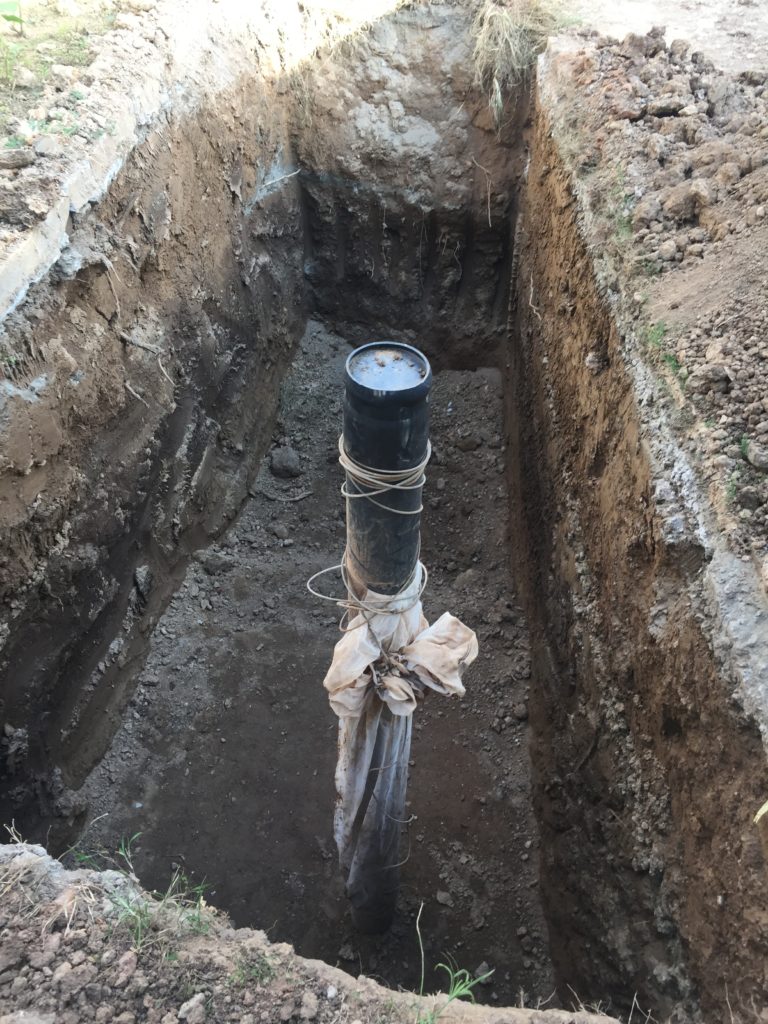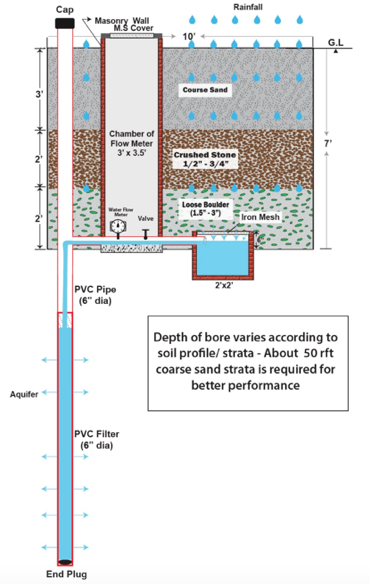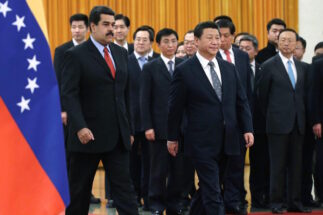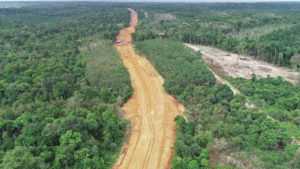In August, the heaviest monsoon rains in almost a century swamped Karachi, Pakistan’s biggest city. Boats rescued stranded people from the flooded streets across the capital of the southeastern province of Sindh. Across Pakistan, more than 400 people died during floods between June and September.
At the other end of the country, Lahore was also hit. But some residents, including Fiazur Rehman, escaped the worst of the deluge.
See: Karachi a victim of poor planning, bad governance – and floods
Rehman lives in the heart of the city in Lawrence Road, a densely populated neighbourhood. In the past, heavy rains and flooding regularly brought two feet of water to these streets. This changed when earlier this year Lahore’s Water and Sanitation Agency (WASA) installed the city’s first rainwater storage system.
“We have witnessed a sea change this monsoon season,” Rehman told The Third Pole.
He said that, despite the heavier rains, there was no flooding because WASA’s new system stored all the rainwater.
See: Pakistan’s dream of a city by the Ravi may be an illusion
For the pilot project at Lawrence Road, a concrete tank was installed underground in nearby Bagh-e-Jinnah park. New drains were laid in the surrounding roads to channel water into the storage tank. The system can store 6.4 million litres of water, which will be used to water the parks and surrounding areas. The project’s catchment area spans over 25 acres – home to around 30,000 people, with roads used by more than 40,000 motorists every day. It cost PKR 150 million (USD 920,000) and is estimated to save PKR 23 million (USD 140,000) per year from flood damage.
There were some difficulties getting the project off the ground. Syed Zahid Aziz, managing director of WASA, said, “We faced stiff resistance in the beginning and even a court case.”
The case was brought by a group of citizens, who were concerned about the environmental impact of the project and trees being cut down. WASA presented an environmental assessment that guaranteed no trees would be felled, and won the court’s approval.
One way to solve two problems?
Lahore relies on extracting groundwater to supply its population of over 11 million people with water. As a result, groundwater levels are falling by one metre every year, according to Punjab’s Irrigation Department. The water table is predicted to fall to below 70 metres by 2025 in most places if current trends continue. The city has resorted to water rationing and hiking prices in the past.
“Lahore receives around 600 millimetres of rain per annum, and rainwater harvesting can solve the city’s depleting water resources,” Zakir Sial, director at the Punjab Irrigation Research Institute, told The Third Pole.
Malik Amin Aslam, adviser to the prime minister on climate change, told The Third Pole that harvesting rainwater is “essential to institutionalise the response to yearly urban floods and with a little ingenuity turn a crisis into an opportunity to utilise this water resource and recharge our depleting groundwater aquifers.”
“The experience with the Lahore pilot project has been very good and we are now planning another 25 sites with rain collection tanks at points of depression in the city,” Aslam said.
Some of these are being planned as public-private projects. For one of the sites, a deal has already been signed, Aslam said.
But others say rainwater harvesting is not the best way to address the problem.
“It’s a failed model,” Muhammad Ashraf, chair of the Pakistan Council for Research in Water Resources (PCRWR), told The Third Pole.
Ashraf said that the best way is to recharge groundwater with the collected rainwater, instead of collecting it in tanks for reuse – which requires resources for treatment, pumping and conveyance. Recharging is cost-effective, he said, and can help address urban flooding and improve the water table.

He said, “We need to reduce abstraction [of groundwater] and boost recharging but we are doing the opposite.”
Ashraf said that excessive groundwater extraction is also responsible for subsidence, pointing to Quetta valley, where groundwater is the main source of water. The area is sinking by 10 centimetres a year, causing cracks in roads, buildings and agricultural land, he said.
Simi Kamal, is chair of the Hisaar Foundation, a not-for-profit organisation working in the water sector. She agreed that the solution to depleting groundwater lies in recharging the water table.
“Any water that is collected from rain (like in Lahore) is good news but perhaps concrete storage tanks are not the answer. The water should be used to recharge the aquifer,” Kamal told The Third Pole.
Every drop counts
There are a number of ways water can be collected from the environment. In Karachi, Kamal said, “moisture harvesting” from air conditioning units could generate millions of litres of water every day. Between March and October, when humidity is high in the city, the cooling action of a two-tonne air-conditioning unit operated for 8-10 hours a day can yield 18-27 litres of water.
She added, “We are not saying people should install ACs to harvest water. We are saying that since ACs are already installed, the condensation around appliances may be harvested.”
“Governments in Pakistan have shown little interest in water conservation as they are more inclined towards building big reservoirs and dams,” she said.
See: Pakistan breaks ground for dream dam project at Diamer
However, authorities in Pakistan’s capital, Islamabad, have demonstrated an interest in water conservation. In 2010, the city’s Capital Development Authority (CDA) made it mandatory for houses covering an area of 400 square yards and above to have a rainwater harvesting system.
The city has a population of over 1.1 million people, which is growing at a rate of 6% per year, and is facing a serious water crisis – a shortage of 480 million litres per day.
“A completion certificate (or permission for occupation of buildings) is not issued if there is no rainwater harvesting system to a newly built house,” Shahid Mahmood, member planning at Islamabad’s Capital Development Authority (CDA), told The Third Pole.
Despite the regulations, there is no official data on the instalment and use of harvesting systems. Often they are mostly used to store fresh water that comes through supply lines or groundwater that has been pumped from private wells and boreholes.

Qauser said that she stores 6,800 litres of water, which is used for gardening, laundry, washing the car and flushing the toilet. She said that installation of the plastic tanks is easy and can be done by a plumber. Her story was showcased in a TV show recently. Since then, a number of people have approached her seeking information about rainwater harvesting.
Next she plans to set up a system to use the excess rainwater to recharge the groundwater.
Replenish the groundwater
Recharging wells receive water from rooftops and roads, filter it and channel it underground to increase the water table.

“We are not wasting a single drop of rainwater,” said Talat Awan, chair of water resources and climate change at the RCCI.
Rainwater from the RCCI’s 5,000-square-foot roof is stored in tanks and excess water goes to the recharging well – a 120-foot bore under a soakaway pit. The system cost PKR 150,000 (USD 920) in total. This season, around 3,200 of water was captured in one hour after 25 mm of rain.
Awan, who owns a business that drills wells, said a 120-foot well costs PKR 25,000 (USD 150) to build, whereas a 1,800-litre tank costs PKR 8,000 (USD 50). A small house with a 1,000-foot roof can install two tanks and collect 115,000 litres per annum with average rainfall of about 100 cm.
“At least 25 public and private organisations including hospitals and mosques have contacted us seeking assistance to replicate our model,” Awan said.
In Islamabad, the CDA has started the process of hiring consultants to identify sites for recharging wells near the Margalla hills to address the groundwater level, which is falling by more than one metre a year.



![A snow leopard in Uttarakhand [image by: Sonu Negi]](https://dialogue.earth/content/uploads/2020/10/Featured_image_PIC_credit_Sonu_Negi_1-300x200.jpg)



![Trillium, an important medicinal plant, is becoming increasingly hard to find in Kashmir [image courtesy: Akhtar H Malik, Kashmir University]](https://dialogue.earth/content/uploads/2020/10/Trillium_medicinal_plant_Arranged_from_Akhtar_H_Malik_a_botanist_of_Kashmir_University-300x225.jpg)
